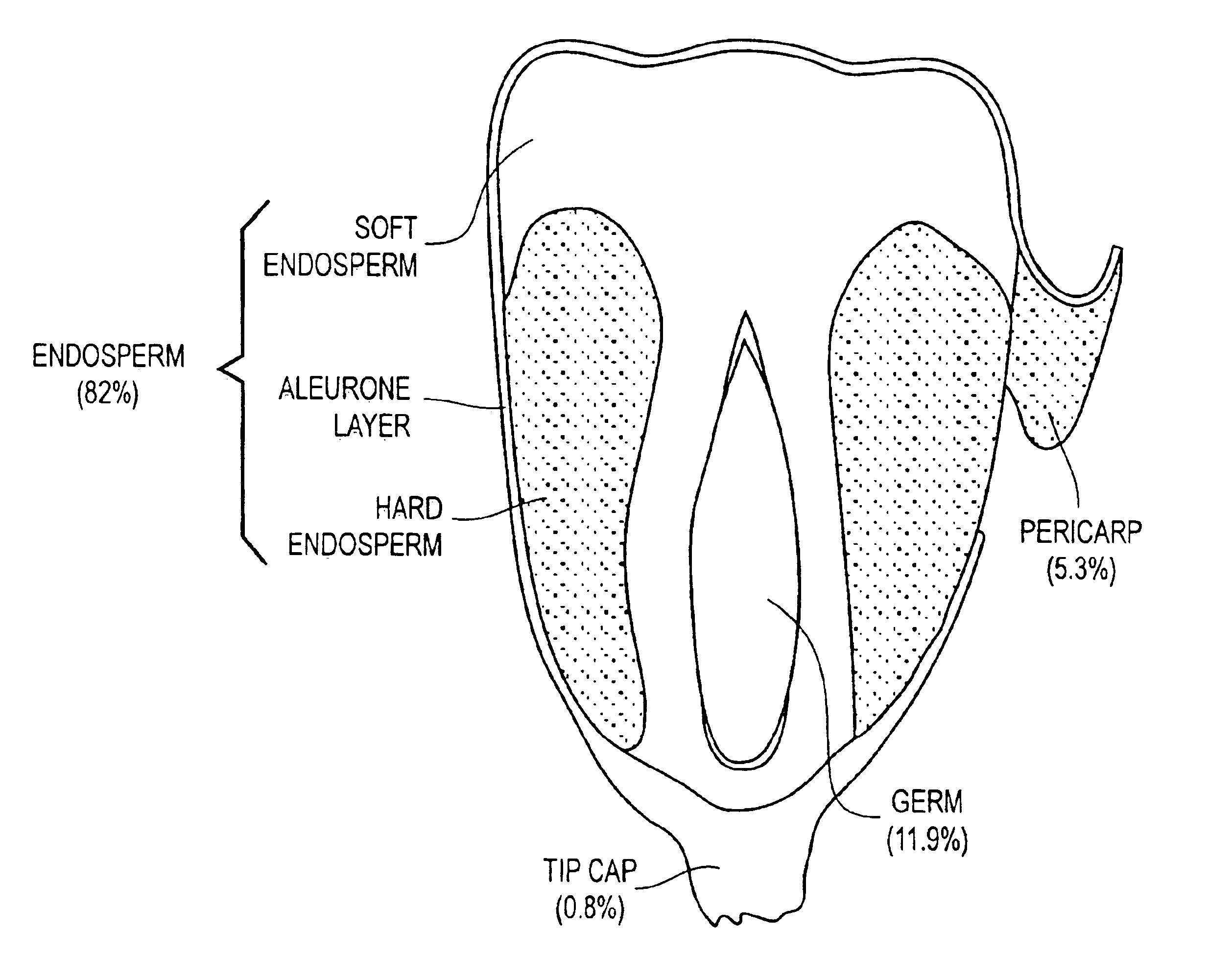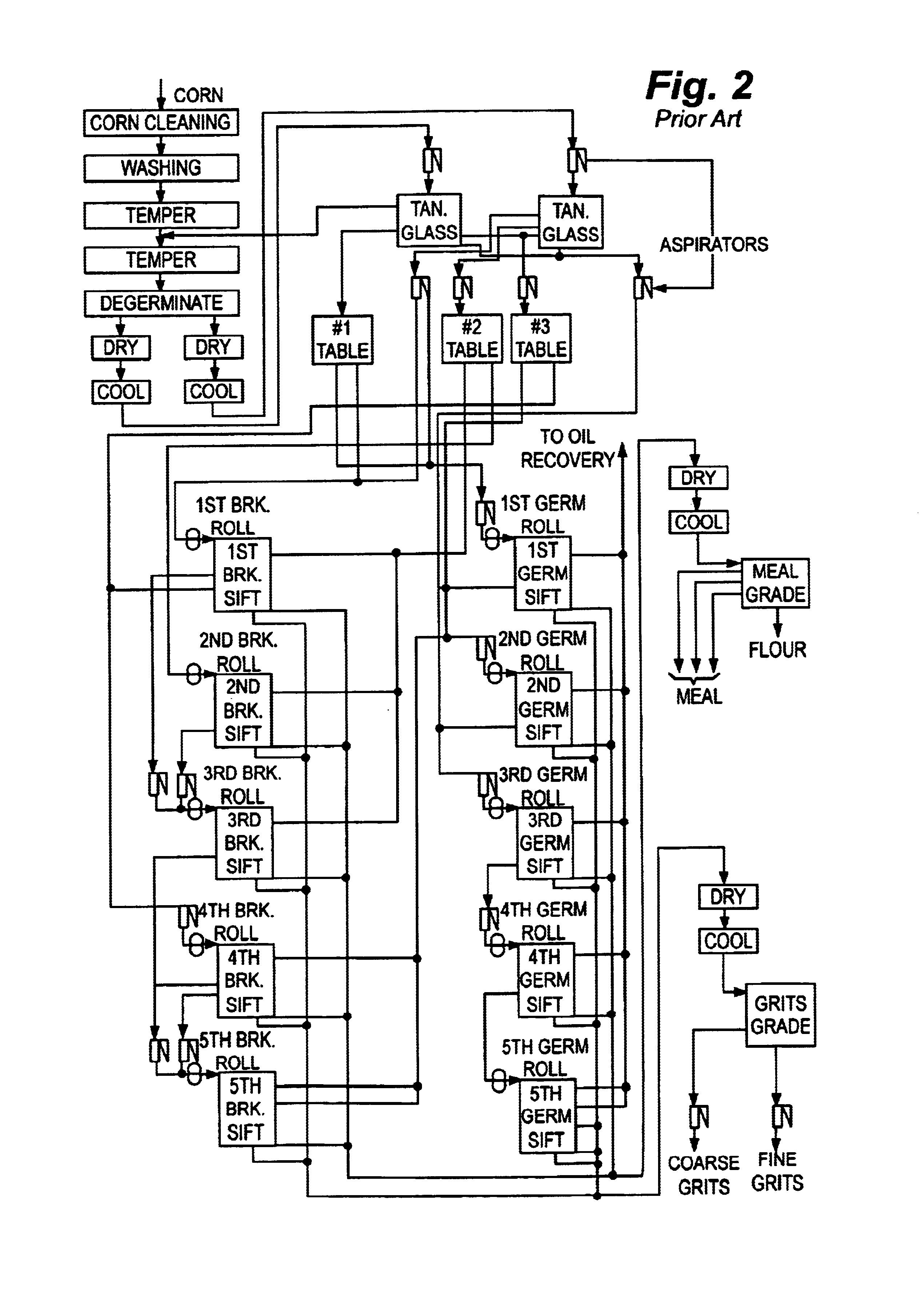Corn milling process
a milling process and corn technology, applied in the field of corn milling process, can solve the problems of reducing the processing efficiency of corn milling, contaminating the initial separated fine stream, and reducing the flow across subsequent process steps, so as to reduce the processing efficiency, reduce the flow, and eliminate the excess processing equipment
- Summary
- Abstract
- Description
- Claims
- Application Information
AI Technical Summary
Benefits of technology
Problems solved by technology
Method used
Image
Examples
Embodiment Construction
[0021]In the present invention, kernels are received and the kernels may, optionally, be pre-treated in any manner required to maximize the production of the desired end product (grits, meal, flour, etc.). For example, the corn is most commonly cleaned through impact de-infestation or washing. The choice of a cleaning method will depend upon the desired end product, as even the cleaning steps may result in breakage of kernels or an alteration in the moisture content. Additionally, pre-treatment may involve tempering or moisturizing of the corn with water, hot water and / or steam, although this is not necessary.
[0022]Because the corn kernel's constituent parts, as illustrated in FIG. 1 and as discussed above, comprise separate components of distinct character, each absorbs moisture differently and this differential absorption impacts degermination efficacy. For example, the pericarp or bran coat may be brittle without tempering, but tempering creates a more pliable bran coat that is m...
PUM
 Login to View More
Login to View More Abstract
Description
Claims
Application Information
 Login to View More
Login to View More - R&D
- Intellectual Property
- Life Sciences
- Materials
- Tech Scout
- Unparalleled Data Quality
- Higher Quality Content
- 60% Fewer Hallucinations
Browse by: Latest US Patents, China's latest patents, Technical Efficacy Thesaurus, Application Domain, Technology Topic, Popular Technical Reports.
© 2025 PatSnap. All rights reserved.Legal|Privacy policy|Modern Slavery Act Transparency Statement|Sitemap|About US| Contact US: help@patsnap.com



